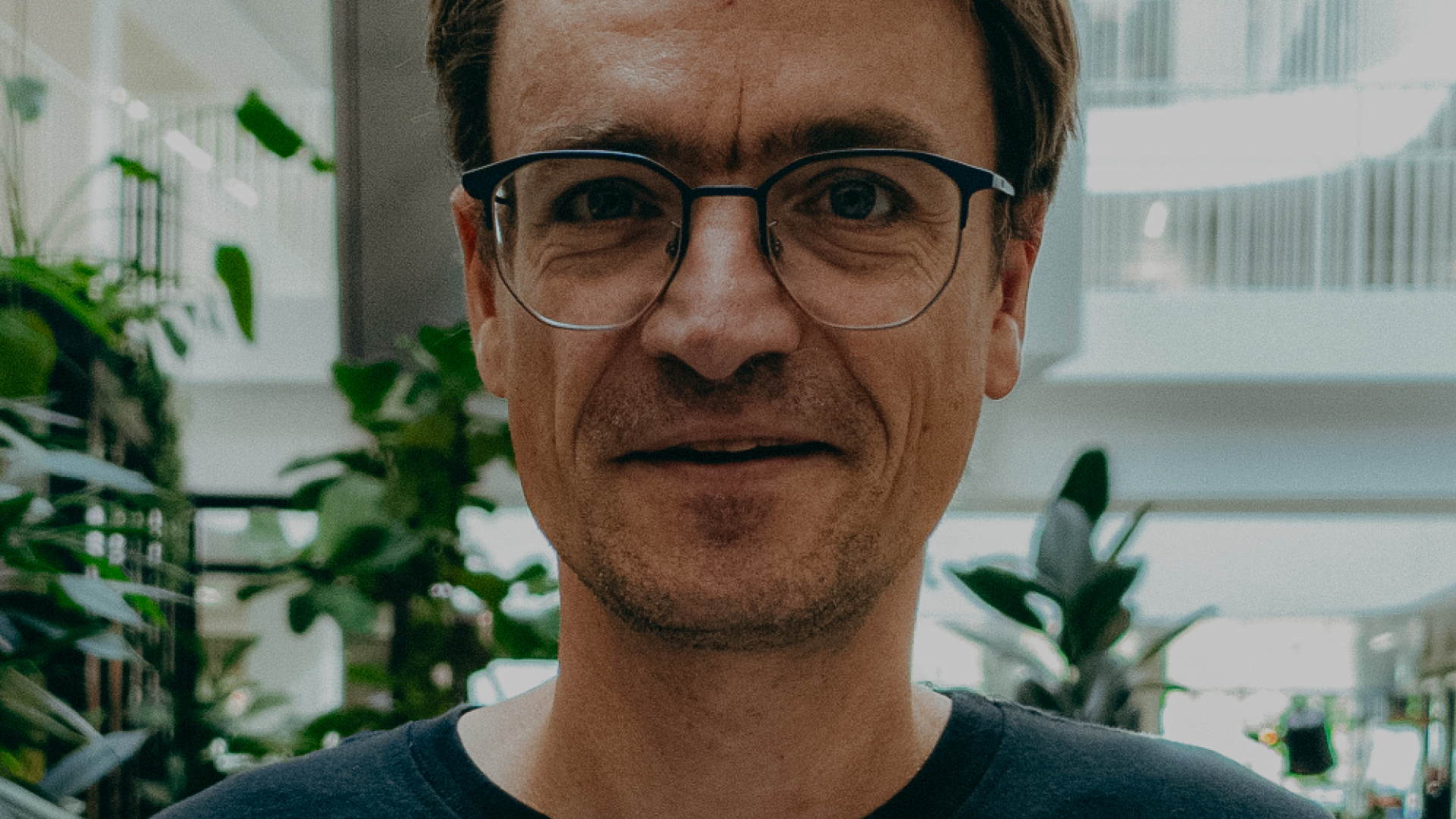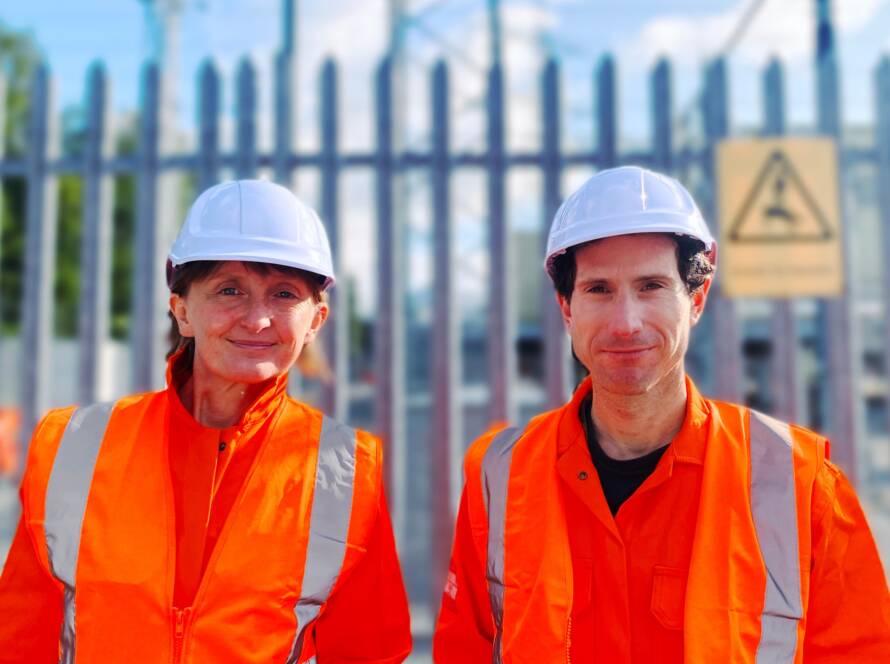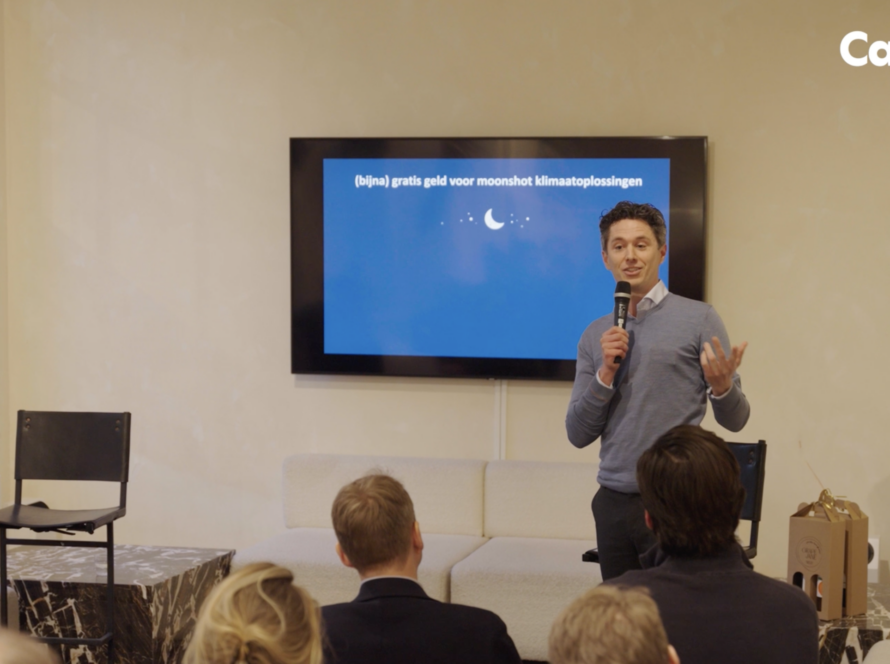What makes a HERO?
Sylvain: “A hero is a mobilizer. Someone who decides to rise and go beyond the status quo. They believe something extra is possible, convince others to take action, and help us all realize we can do more collectively.
On our platform, however, it’s not just the mobilizers, it’s also the people supporting those leaders. That may not have the time themselves, but want to help support those advocating on their behalf.
How do you find your supporters?
Sylvain: “First, you have to know that between 80% to 89% of global citizens want us to do more on climate. To do that we need a lot of change – individual change, legal change, industry change, we need innovation, etcetera – but few people can actually dedicate themselves to this work. So we created the HERO platform to allow those who don’t have time to support those who can act on their behalf. We currently support over 100 climate leaders. And we have over 1300 citizens supporting them.
and what about the mobilizers? Do you scout them?
Sylvain : “Mobilizers are nominated by climate leaders and trusted organisations. Each nomination is reviewed by the HERO Independent Selection Board, which includes representatives from the Global South, from the mobilizer community, and from the citizens that support HERO. We look at their track record in non-violent climate action and ask for endorsements from others active in the field. The aim is to identify the people who are already successfully driving change, whether or not they are in the spotlight.”
I believe more people want climate action. At the same time, they keep flying, keep eating meat daily.
Sylvain: “I worry that as a society, we may put too much emphasis on the individual instead of focusing on the collective transition. My personal belief is the way to change society is to change the laws for everyone. A 20-year global study led by Oxford researchers shows that it’s well-designed combinations of climate laws that drive the largest CO2 reductions.That’s what climate mobilizers on HERO advocate for: new policies like the Green Deal, which have a huge impact.”
Why is it so hard to become a HERO around climate issues?
Sylvain: “Our overconsumption system is pushing itself into the planetary boundaries of a livable world. This overconsumption leads to a lot of inertia in the system: we know we need to change but have grown accustomed to too many things, too much ease, etcetera. So that’s one issue: there is a lot of inertia making it hard to change a huge system.
Secondly, we, the climate movement in general, have not been able to make the movement more emotionally relevant to other people. The climate movement has been very scientific driven: So many gigatons, so many degrees. Dense scientific reports. But we need to make climate action relatable, and personally relevant.”
For example: it’s now cheaper to have green energy for your home than fossil energy. And if there’s a war that’s influencing oil prices, that won’t affect you as much either.
Or think about zero emission zones. A lot of people are negative about those. But if people knew the most polluted places in cities are in front of schools (because they all drop off their kids with the car running) they would be so much happier about zero emission zones. That’s what makes the change difficult: it often fails to connect with the actual needs of people.
Carbonfix is allocating funds specifically to fund carbon-focused mobilizers. Without already divulging names, can you explain in more detail what they will focus on and why that makes sense?
Sylvain: A lot of the work of mobilizers around the world is to stay within the Paris agreement goals. Communities that stand up against the development of an oil field affecting their community, makes politicians listen. Avoiding new oil and gas projects that would lock in decades of emissions is one of the projects funded by CarbonFix. Supporting climate policies and treaties that will accelerate the transition and redirect finance flows. We should take away subsidies from fossil fuels and redirect them into energy transition.
One other mobilizer has worked with the city of Bogotá and advocated successfully for a climate action plan to phase out all buses to renewable buses, which has a projected 40 million ton CO2 reduction.
Your team has projected a carbon reduction impact of over 10 million tons of CO2 emissions avoided by 2030 – based on a methodology developed by researcher James Ozden. Can you give an example on how that works?
Sylvain: “The original EU Green Deal ambition was originally to say “reduce emission by 40% by 2030. Mobilizers said: that can be more ambitious. After campaigning, bringing together 500K people, 300 scientists, and celebrities, Frans Timmermans was able to deliver that higher ambition internally to the various heads and negotiated it to 55%. “Fit for 55” is what it’s now called. In his own words: without the mobilization that ambition would not be heightened. That’s 3.5 billion tons of CO2 saved. This is what the methodology is about: figuring out attribution around policy change.
But we take haircuts to the attributions. Meaning: we take into account there’s a whole array of possible outcomes in the end, and variables in play. So even after accounting for that, we only attribute a part of the end result to the mobilizers.”
Would you say a big part of your work is funding these mobilizers?
Sylvain: “Absolutely. It’s critical. Their story is a story of resilience. These mobilizers that have risen up on behalf of us, over time, deserve support. If we don’t support them, we will lose them. We will lose their experience, the compounding effects. And even conservative politicians admit to us we need those mobilizers.”
But we also aim to not just support them financially, but to have a rapid response unit to step up when needed. This allows us to diversify the range of actions, and to share knowledge in a super agile way. So it’s about adding resilience all across the world, and over longer periods of time.”
How do you figure out how much income is required in various countries for a HERO?
Sylvain: “We don’t do complicated calculations, we give equal amounts to whatever country you’re in. We also don’t differentiate between the front person with a higher public profile or the people supporting, organizing communities, for example. We pay the same for all. It’s simpler. And fairer as it’s partly about redistributing wealth that may also have more impact in the Global South.”
Core topics you want your mobilizers to focus on are renewable energy, deforestation and… others? How do you identify which are most important?
We don’t do scientific climate research ourselves. We build on others that identify the most urgent issues. Like Systems change lab who identified 14 systemic changes that need to happen, like a shift in energy systems etcetera. We identify those big blocks of system changes. We do research on historically where citizen mobilization has been most effective. So that our mobilizers too, can see where they can be most effective in their topic of choice.
You don’t just fund climate leaders, next year you will try and measure their impact. Talk to me about your Advocacy Impact Monitor?
Sylvain: “Our first step is looking at legislative wins, like the EU Green Deal and the role advocacy played, as mentioned before. Step two is looking at voting behavior of politicians. We’re doing this with the University of Michigan. Constituency for constituency, we check whether MPs have been voting for or against climate related legislation. We analyse their voting patterns and see if their constituency’s efforts have been of influence over time. We also interview those MPs with a swinging vote to see what makes an impact. And step three is looking at the MEPs of the EU and better understand out of the 720 MEPs, which are most likely to vote in favour of climate issues, and in what way. Is it a petition? Back yard protests? Ads? We want to be able to identify patterns and replicate the approach from different climate related topics, so that a successful renewable energy bill in Poland influences another law on another climate topic in another country.
On your home page, I noticed 11 photos of female Circle Leaders out of the 14 photos featured. Can you talk to me about that? Did you manage to support more female than male mobilizers? Or do you want to support them more?
The high number of women featured reflects the reality of our work: over 80% of our mobilizers are women. We don’t choose mobilizers based on gender, we support those already leading powerful, community-rooted climate action. And in most cases, those leaders are women, it’s a mirror of the movement.
From grassroots movements to global negotiations, women are driving transformative climate action. A powerful example: the Paris Agreement at COP21 was shaped by three amazing women leaders, Christiana Figueres, Laurence Tubiana, and Farhana Yamin, whose leadership helped make that historic deal possible.
We’d love to see more media coverage exploring this angle, the often under-told story of women-led climate action and the systems transformation it represents.
With the enormity of the challenge in front of us, how do you define success for HERO?
For us, success means building the infrastructure to support 10,000 mobilizers with a basic income by 2030 – trusted, community-rooted leaders who are driving the transition on the frontlines to avoid an estimated 10 million tons of CO₂ emissions by pushing for bold climate action where and when it matters most.
Success for us is having agile and resilient climate movements, ensuring that those doing some of the most important work of our time have the support they need to keep going and that their work is recognised.
What do you wish others outside the climate space knew that those inside it know?
That the vast majority of people – and businesses – already support the transition. The 89% Project shows this clearly: most citizens want their governments to act on climate. And recent polling from April by E3G and We Mean Business found that 97% of business leaders across 15 countries support moving away from fossil fuels to clean energy, with 78% saying it should happen within the next decade.
What’s missing isn’t public support – it’s visibility and political courage. That’s where mobilizers play a crucial role: they amplify citizen voices, bring transparency to democratic processes, and serve as a counterforce to powerful corporate lobbies slowing down progress.
They are the bridge between people and policy – and they’re showing that climate leadership can come from the ground up.




